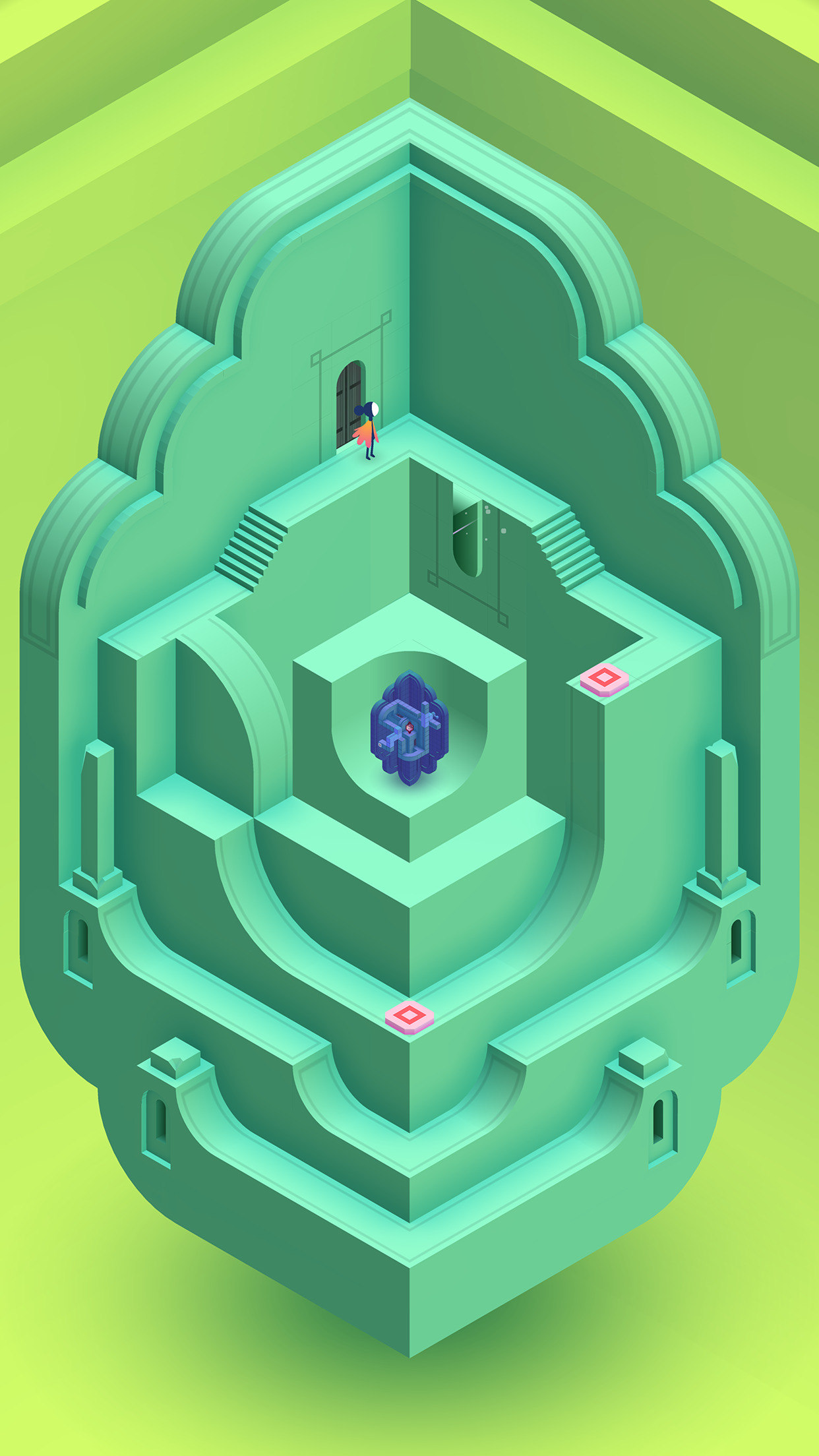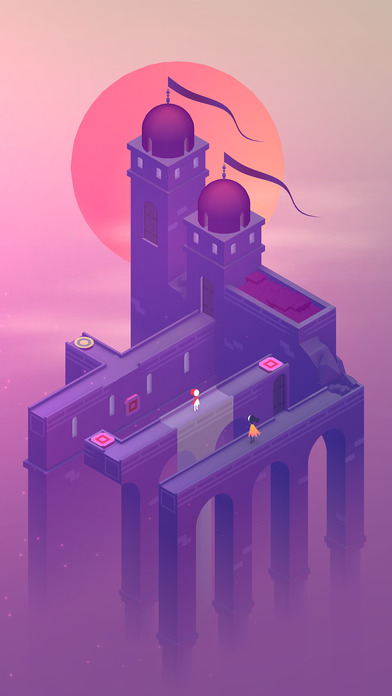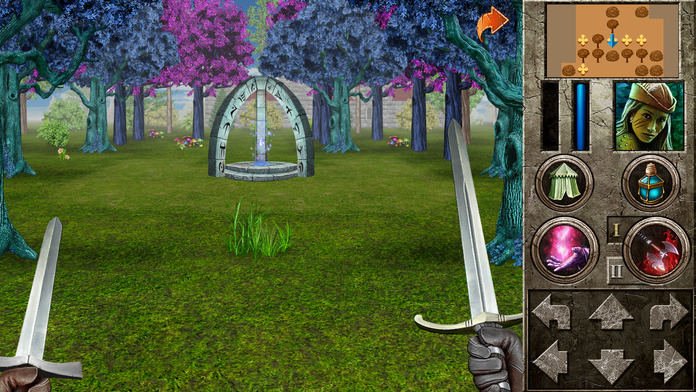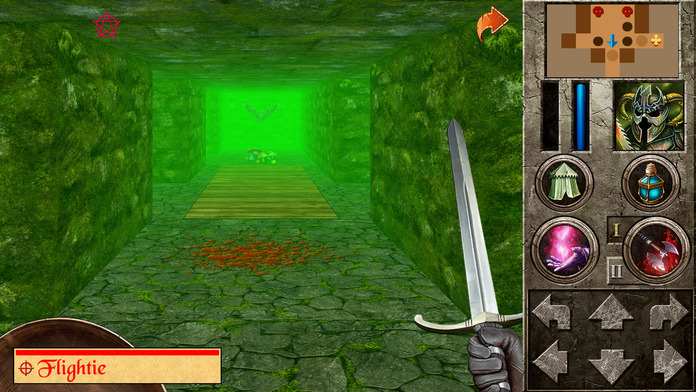 Hello everyone, and welcome to Musgravian Musings, a little space of my own where I can do some non-review reflections on recent game releases. In general, the featured games are ones that have caught my interest in some way or another, and will tend to be games that I didn’t (and won’t) review. This time around, I’m looking at two recent additions to some beloved mobile franchises and their very different ways of building on their predecessors. From ustwo, it’s Monument Valley 2 ($3.99), a surprise release from last week’s WWDC event. From Zarista Games and Redshift, we’re looking at The Quest – Thor’s Hammer ($2.99), the first completely original add-on content for the recent HD release of The Quest ($7.99).
Hello everyone, and welcome to Musgravian Musings, a little space of my own where I can do some non-review reflections on recent game releases. In general, the featured games are ones that have caught my interest in some way or another, and will tend to be games that I didn’t (and won’t) review. This time around, I’m looking at two recent additions to some beloved mobile franchises and their very different ways of building on their predecessors. From ustwo, it’s Monument Valley 2 ($3.99), a surprise release from last week’s WWDC event. From Zarista Games and Redshift, we’re looking at The Quest – Thor’s Hammer ($2.99), the first completely original add-on content for the recent HD release of The Quest ($7.99).
Monument Valley 2
 I’ve seen a wide range of opinions on this game, and I can understand why. Monument Valley ($3.99) had a lot of cool things going for it, and depending on which of those things appealed most to you, the sequel could be anything from another fantastic helping to a complete disappointment. The most common view on the game that I’ve come across is that it’s essentially the same as the first, and whether that’s a good thing or not falls to the individual. In my case, though, I can’t even reach that particular common ground. I don’t think Monument Valley 2 is as good as the first game at all, and considering the motion of time and the fact that it doesn’t have novelty working for it in quite the same way, the end result held limited value for me. Don’t get wrong, though. It’s still a good game, and on a platform that sees the sheer number of mediocre releases that iOS does, it more than earns its keep.
I’ve seen a wide range of opinions on this game, and I can understand why. Monument Valley ($3.99) had a lot of cool things going for it, and depending on which of those things appealed most to you, the sequel could be anything from another fantastic helping to a complete disappointment. The most common view on the game that I’ve come across is that it’s essentially the same as the first, and whether that’s a good thing or not falls to the individual. In my case, though, I can’t even reach that particular common ground. I don’t think Monument Valley 2 is as good as the first game at all, and considering the motion of time and the fact that it doesn’t have novelty working for it in quite the same way, the end result held limited value for me. Don’t get wrong, though. It’s still a good game, and on a platform that sees the sheer number of mediocre releases that iOS does, it more than earns its keep.
But I want to get away from the simple question of whether it’s worth buying or playing. That’s what the review is for. Instead, I want to talk about some of the specific qualities of the game and how they measure up to the previous game and its expansions. I’ll warn you all ahead of time: some of this is going to be very nit-picky. If you love the game, please don’t let any of this spoil your fun. It’s more than okay for people to value different things differently and come out with their own equally-valid likes and dislikes as a result. There is also a good chance I will spoil things here, so if you haven’t spared the hour to play the game yet, tread carefully.
 Monument Valley 2 is pretty short and easy, just like the first game. There are times where it seems like it might get more complicated than Monument Valley, but nothing really comes of it. It shares a major fault with the first game in that it ends just as it seems to be picking up in terms of mechanics, and I feel like it doesn’t even do as good of a job with its closing levels of delivering even a sliver of its potential. When I finished Monument Valley, my main thought was that I wished the game had more levels like the very last. After completing the sequel, I found myself wishing that the game had some levels worthy of having more of. It dangles the idea of using multiple characters to solve complicated puzzles, but it doesn’t do anything of note with it.
Monument Valley 2 is pretty short and easy, just like the first game. There are times where it seems like it might get more complicated than Monument Valley, but nothing really comes of it. It shares a major fault with the first game in that it ends just as it seems to be picking up in terms of mechanics, and I feel like it doesn’t even do as good of a job with its closing levels of delivering even a sliver of its potential. When I finished Monument Valley, my main thought was that I wished the game had more levels like the very last. After completing the sequel, I found myself wishing that the game had some levels worthy of having more of. It dangles the idea of using multiple characters to solve complicated puzzles, but it doesn’t do anything of note with it.
I also feel the art and level design in the sequel isn’t as strong as it was in the first. There were only a couple of levels that wowed me in Monument Valley 2. I really liked the level that began by zooming out of a series of areas within areas, challenging you to work your way through each one. I also appreciated the somewhat brief excursion into abstract art in the style of Piet Mondrian. For the most part, however, the levels lacked the zing of those found in the first game. It’s hard to put into exact words, but the levels in Monument Valley felt like elaborate puzzle boxes that shifted and opened up to reveal things you couldn’t see from your initial perspective. It feels like there are fewer moving parts in the sequel. More sweeping puzzles away and replacing them with new ones instead of trying to make a nice, natural transition. This is also where the lack of novelty hurts the game the most. Monument Valley 2 isn’t showing me much new, and I’m already used to the things they’ve carried through from the previous game.
Even the story, as simple as it is, doesn’t work as well for me. It’s more on-the-nose than the first game was, leaving far less to your imagination. I kind of liked trying to hash out what the first game was trying to express. In Monument Valley 2, it just tells you, and quite early on at that. There are some heart-warming moments, to be sure. Any time the mother and daughter have been separated and re-unite with a hug, it’s adorable. Particularly after you’ve gone through the lengthy sequence where the daughter grows up, since it implies a rather significant passage of time. But the ultimate take-away is that you have to learn to let go of your children and allow them to make their own way in life, a message that isn’t really delivered all that effectively.
 The game’s brevity works heavily against this theme. Mother and daughter are rarely parted for more than a few minutes in the real world, and while I thought the game was going to take an interesting turn by not showing you what the daughter was doing in that time, you end up going back and walking her through her part. I guess this is the problem. The mother has to learn to let go, but the player is never truly parted from the daughter. There’s nothing we have to accept as being out of our hands, truly. We guide her every step of the way. It’s bothersome because I think the game could have hammered the point home without too many changes.
The game’s brevity works heavily against this theme. Mother and daughter are rarely parted for more than a few minutes in the real world, and while I thought the game was going to take an interesting turn by not showing you what the daughter was doing in that time, you end up going back and walking her through her part. I guess this is the problem. The mother has to learn to let go, but the player is never truly parted from the daughter. There’s nothing we have to accept as being out of our hands, truly. We guide her every step of the way. It’s bothersome because I think the game could have hammered the point home without too many changes.
Still, the biggest letdown is in the gameplay. The first game had me wishing for more of what it was doing towards the end, and its expansion, Forgotten Shores, gave me that. The puzzles were slightly more complex, though still relatively easy so as not to hold people up for too long. And perhaps ustwo is looking to take a similar route here, easing players into the world with an initial set of levels that offer virtually no resistance at all, with a plan for more complex and difficult stages as an add-on. I’m not sure how I’d feel about that, though. I was forgiving of the first game’s general lack of challenge because it was sort of a proof of concept. A starting point. And the add-on content seemed to support that idea. But here we are with a sequel that rewinds things back to the difficulty level of the first game, or indeed, an even lower level of difficulty. I get that Monument Valley isn’t about stumping the player, but it’s disappointing that there’s so little substance here after how good Forgotten Shores was.
I enjoyed playing through Monument Valley 2, but at least in my own case, I doubt I’ll be keeping it around the way I kept the first one on my device. I have consumed it, and I don’t anticipate gleaning anything further from it by playing it again. Lovely, but not really essential.
The Quest – Thor’s Hammer
Speaking of being essential, it’s probably something worth talking about with regards to The Quest and its many expansions. Conceptually speaking, I absolutely love that there’s this big, sprawling, endlessly-expanding RPG on iOS. I also like the way these expansions are distributed. You buy the expansion as a stand-alone app, and you can indeed play it as such. It will roll a level-appropriate character for you to use, and you can just head out and have a good time. If you own the main game and have it installed on your device, you can simply choose an option from the expansion’s menu to open up the original and enable the expansion. After that, you can keep or delete the separate expansion app as you see fit. This method allows you to carry over your character from the main game, even though they may not be level-appropriate. Even if they aren’t, there’s sometimes fun in that, too.
That’s certainly a more complicated set-up than just putting IAP in the game, but besides the fact that IAP was a nebulous thing when The Quest first started expanding, I think it’s also a method that covers more potential scenarios. It must be a pain for Redshift to keep everything working smoothly with this kind of arrangement, and they are indeed going to have to update somewhere near a dozen different apps for 64-bit compatibility if they want to keep every Quest Classic expansion working in the future. It’s a very consumer-friendly approach, and at least past the first couple of expansions or so, I think it makes a lot more sense than trying to sell these added adventures through IAP in the main app.
Credit must also be awarded to Zarista Games, who puts together these expansions using Redshift’s tools. Apart from the base game, the Islands of Ice & Fire expansion, and the Lost Archipelagos expansion, every bit of content for The Quest available to iOS players was created by Zarista. That means they’ve done 17 expansions for the game, which just might be a record for any official RPG release, let alone one on iOS. While it’s true iOS games see more updates and added content than is traditional in gaming, we don’t typically see this kind of post-release support for paid, done-in-one style games. They’re not all winners, but for fans of The Quest hungry for more content, the Zarista expansions represent hundreds of hours of adventure. Zarista has got a knack for coming up with interesting scenarios and bringing in mythology and lore from cultures all over the world, giving their expansions an uncommon variety from one add-on to the next.
Such is the case with Thor’s Hammer, which obviously draws on Norse legends and mythology. As these sorts of things go, it’s a great source. The expansion is obviously limited to an extent by the trappings of the game it builds on, which even with a recent facelift is certainly showing its age as time goes on. Still, the expansion makes a good go of things, with lots of new things to discover, collect, and kill, and an all-important new list of quests to check off. The difficulty level is aimed at lower-level characters, so unless you want to stomp through it, you’re probably better off rolling up a new character for it. That said, it serves as a decent training ground if you’ve completed the content of the base game and its expansion. The word is that extremely challenging Hero of Lukomorye will be coming as the next expansion for the HD version of The Quest, so you’ll need to beef up your character as much as you can before that.
Thor’s Hammer is good meat-and-potatoes stuff that might not be very exciting but will certainly be welcomed by a specific niche. Its most noteworthy aspect is in that it is the first original expansion for the HD version of the game. It’s also the first expansion that has not been and will not be made available for The Quest Classic. After more than eight years of regular content expansions, that particular version of The Quest is now over. By the looks of things, Zarista will be bringing most if not all of their previously-released expansions to the spiffy new HD version, mixing in brand-new expansions where they can.
That puts Thor’s Hammer in an interesting position compared to other recent Zarista-developed expansions. It’s arriving to a relatively fresh slate, one where the current player base may indeed be looking for more and isn’t yet overwhelmed by choice. I absolutely love that The Quest Classic is such a big, woolly thing, but I also recognize that for most people who played the base game, the expansions stopped counting a long time ago. It’s not that the quality dropped, mind you. Zarista’s work has only gotten better with time and experience. It’s more that each person only has a finite amount of time, money, and overall resources available to them. They need to distribute those resources in a way that will maximize their happiness, and to that end, there’s probably only so many expansions to one game that they will be willing to expend those resources on.
Which brings it back around to the idea of a game being essential. I think Thor’s Hammer is as good as any of the other expansions for the game. It’s a lot of fun, packed with some great puzzles and challenges. At the same time, the only way I could possibly sell it as essential outside of a very specific niche of players is to point to its status as only the second expansion to arrive for The Quest HD. It’s essential in as much as the circumstances made it so. As such, I expect this expansion to do better business than usual for Zarista and Redshift, which should finance more expansions, each of which will be essential for an increasingly smaller number of players. I’m just happy that there are apparently enough people out there like me to keep the likes of Zarista and Kemco doing their thing, no matter how many “inessential" releases they put out.
That’s all for this edition of Musgravian Musings. Thanks for reading, and be excellent to each other!


